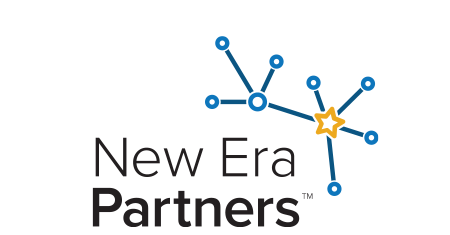Many in the industry consider compliance with FDA’s new Food Traceability Rule, FSMA 204, another cost their organization will incur. While getting processes and systems in place to manage compliance may require upfront spending, the benefits of supply chain traceability far outweigh the costs.
In part one of our series, “Going Beyond Compliance – Getting a Return On Investment (ROI) From Your Traceability Program”, we’ll focus on some of the most significant areas your organization can focus on to see ROI from compliance with FSMA 204. The topic for this article was inspired by some key points made by my colleague Andy Kennedy and his peers in a recent panel discussion at the IFT Conference in Chicago. During one of the breakout sessions, the panel spoke about the new Food Traceability Rule in front of a crowded room.
While much of the conversation focused on implementing the rule and the complications of interoperability between dispersed systems within the supply chain, the discussion expanded into costs and the ultimate ROI of implementing FSMA 204. The key points discussed were:
- Collaborative, cross-functional teams
- Connected systems
- Better warehouse management
- Ability to trace back
- Consumer health and mitigating fatalities
Collaborative, Cross-Functional Teams
Fresh food supply chain transparency is quite complex, and the new rule affects many roles within an organization. Many large organizations have siloed specialties that don’t interact with each other outside of their role requirements. However, compliance with FSMA 204 has allowed large organizations to create innovative, cross-functional teams to collaborate on this initiative.
A typical FSMA 204 compliance team should include staff from the following disciplines:
- IT
- Legal or regulatory compliance
- Food Safety
- Supply Chain
- Operations
- Warehouse
- Restaurant or Store Management
- Supplier Management
The concept of a cross-functional team to execute major initiatives is not going away. Once you have this team in place, your organization will be set up to tackle other big projects requiring knowledge and skillsets across multiple functions. While individuals may come and go, the institutional knowledge this team will have built will be highly effective in moving your organization forward in exciting and innovative ways.
Connected Systems
As part of the IFT panel discussion and through our consulting work, we’ve had many conversations around the complexity of FSMA 204 compliance. One of the trickiest parts of complying with the rule is working with disparate systems that don’t talk to each other. Extensive supply chain networks must deal with different requirements, processes, and systems to capture and manage product data. Some companies, through acquisitions or location autonomy, may have different systems for the same purpose, like scanning labels or storing data.
We addressed some of the challenges around disparate systems and some options for a path forward in our recent article, “How to Budget for FSMA 204 Compliance”. Disparate systems can be a roadblock or, at the very least, create inefficiencies when capturing, storing, and sharing Key Data Elements (KDEs), and creating your electronic sortable spreadsheet, so we highly recommend prioritizing your tech stack.
Once you have the right solution in place, the efficiencies you’ll gain and the insights from the data shared across your supply chain can vastly improve ROI.
The impact can be quite powerful when you have accurate supplier and commodity-specific data seamlessly flowing through your facility and out to your stores and restaurants. Not only will hours be saved by not having to export and share data manually, but you’ll also be able to use that data to make proactive decisions and more quickly address concerns. A potential non-compliance or food safety concern can be caught in real-time and addressed with less risk of negative implications.
Using Technology to Manage/Reduce Costs
Using the right food traceability technology to manage product inventory, quality, and traceability processes within your facility will enable you to considerably reduce shrink due to mismanaged inventory, quality issues, and poor tracking of shipping and receiving data.
“Shrink” is the accounting term used to measure the difference in the number of actual items in stock vs. what recorded inventory shows. Shrink can result from employee theft, shoplifting, administrative errors or inefficient processes, vendor fraud, product damage, and waste. A recent article by McKinsey concluded that 2–3% of retailers’ revenue disappeared due to shrink, a small but impactful percentage because of razor-thin margins within the grocery business.
Many organizations operate on a first in, first out basis; meaning that product received first is shipped out first, regardless of expiration or best buy date, quality or shelf life. This straightforward approach has worked for the food industry in the past. However, with newer technology available to manage inventory traceability requirements, there are better ways to manage inventory that will help reduce shrink and food waste. Using a first expired, first out approach can require a different method of tracking product “ship by” dates, but with the right technology, you can significantly reduce waste (and shrink) of food no longer edible or eligible to be sold. Seemingly minor differences can add up to a lot of food saved and shelf lives extended, resulting in a higher percentage of food sold and a lower percentage of food lost.
Similarly, better management of food quality can reduce shrink, too. Having the right processes and tools to capture quality data can enable you to catch quality issues early on. Ensure your suppliers are sending product that meets your standards so that you don’t have to dispose of or sell food at a discounted price because of deteriorating quality. Once you’ve established quality requirements, you’ll significantly reduce rejections and confidently meet customer and consumer expectations.
By complying with FSMA 204 and accurately tracking where your food comes from and where it’s going, you’ll have a better pulse on your supply chain. For example, matching up your supplier’s shipping data to what you actually received in real-time eliminates the risk of the wrong product sitting in a warehouse for several days before you realize there was a mistake. Those few days could be the difference between a sellable product vs. product that goes to waste because it cannot be used.
For example, a pallet of bagged salad with an expiration date ten days out arrives at the DC on Monday. On Tuesday, a pallet of bagged salad arrives with an expiration date seven days out. The pallet that arrived on Tuesday should be shipped out first because it expires first, vs. the old way of thinking where the pallet that arrived first would ship out first. With this new approach, you’ll buy yourself a few extra days on that second pallet.
Improved Ability to Trace Back
One of the most significant benefits of FSMA 204 is the improved ability to trace back across the supply chain. Currently, the bioterrorism rule requires all members within the food supply chain to track all suppliers one step back and all buyers one step forward. The FDA should be able to trace all food outbreaks to their source with this information. However, so many times during an outbreak investigation, they’ve run into pockets of missing data. Without the complete picture, the source of the outbreak often remains unknown. In a recent traceability workshop, New Era Partners’ Principal Traceability Advisor Andy Kennedy shared an interesting finding from a cost-benefit analysis that FDA performed when writing the Food Traceability Rule. They found that it took an average of six days to find the source of an outbreak with a Traceability Lot Code, but it took over a month (thirty-five days) without one.
Thanks to the careful development of FSMA 204, some adjustments to the old requirements will significantly impact on the FDA’s ability to identify the source of an outbreak. One such adjustment is that any food on the Food Traceability List (FTL), as developed by the FDA, will need to be tracked to the original facility where the product was packed or transformed. We are no longer working on the assumption that one back, one up is enough.
This increased ability to trace back will help us, as supply chain partners and consumers, better understand where our food comes from. Food traceability will also help strengthen supplier relationships and quality expectations and offer more visibility into the complexities of our food supply chain. The most powerful ROI our industry gets from knowing where our food comes from is a faster response and resolution to food safety outbreaks, resulting in a healthier consumer community.
Conclusion
The return on investment when a strong, FSMA 204-compliant traceability plan is implemented can be quite impactful to an organization. A strong, cross-functional team can benefit a company’s efficiency, effectiveness, and innovation for years to come. Using and sharing data within your organization and across your supply chain can provide a level of transparency that enables proactive decision-making and a quick response to food safety issues.
While the benefits to your organization can bring about significant positive change, the most powerful ROI we can get from knowing where our food comes from is the trust in the safety of our food. As an organization, you’ll mitigate costly recalls and investigations, protecting your brand and building on consumer loyalty. As consumers, we can all feel confident that our food is safe.


